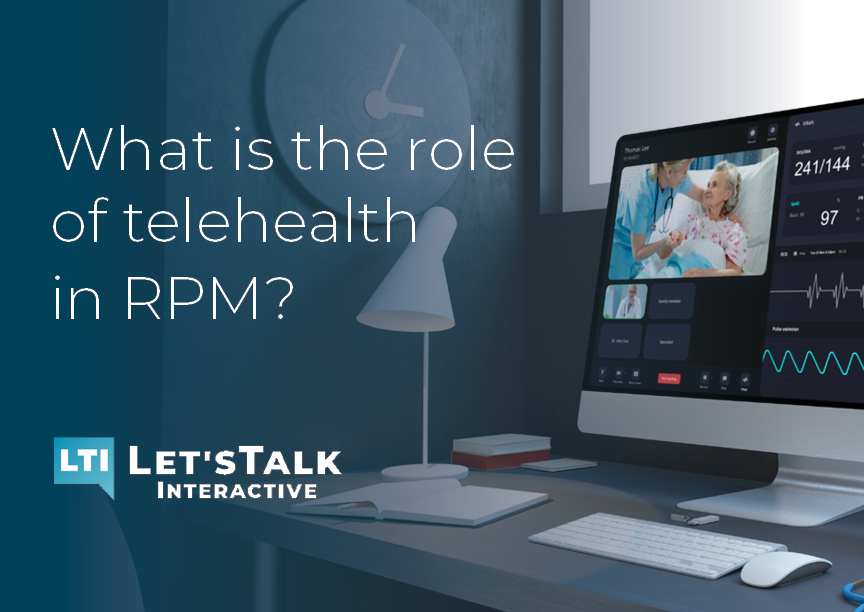
Remote patient monitoring uses technology to gather patient vitals outside of a traditional healthcare setting and delivers that information to healthcare providers for assessment, recommendations and instructions. RPM enables providers to manage acute and chronic conditions, address health equity, and is typically done in the patient’s home, whether that be a private home or an assisted living facility.
What’s the difference between remote patient monitoring and telehealth? The broader sense of telehealth encompasses all the different technologies used to deliver care remotely, regardless of setting or frequency. At times, remote patient monitoring and telehealth are used interchangeably, but it’s more accurate to say that modern remote monitoring leverages the technologies made available under the umbrella of telehealth.
In that sense, there is no aspect of remote patient monitoring in today’s healthcare environment that isn’t assisted by telehealth in some respect. The two are intertwined in ways that allow clinicians to monitor their patients more consistently than before.
This article delves into what aspects of remote patient monitoring are made simpler using telehealth technology, and what types of equipment are used in the field today.
Telehealth Technology Makes Remote Health Monitoring Easier
If chronic health conditions aren’t carefully managed on a daily basis, patients are at increased risk of readmission to the hospital. Telehealth technology allows for a real-time stream of health data to be transmitted remotely, allowing quick adjustments and care decisions to be made by a licensed specialist without waiting for an appointment date.
Using technology to render preventative care creates a value-based model that benefits patients and providers alike. Conditions can be managed early before they become expensive hospital interventions.
By virtually bringing a specialist into the patient’s room with a familiar-looking tablet or mobile phone interface, they are made more comfortable and empowered to manage their own care. A physician can then stay appraised of their patient’s long-term condition on a daily or even hourly basis. Wearable telehealth peripheral devices transmit data like blood pressure, heart rate, and glucose levels to the physician continuously, so any deviation can be acted upon quickly.
Unofficial caregivers also benefit, like an elderly patient’s adult children. Giving them a timely and accurate assessment of their loved one’s ability to live independently results in peace of mind and eliminates the anxiety of waiting weeks between visits.
What Devices and Services Are Used?
Medicaid reimbursement for remote patient monitoring services requires interactive communication between patient and provider. This can be achieved most easily over a secure telehealth platform’s video conferencing software.
During a telehealth visit in this context, a nurse or technician may use telemedicine peripherals like a video otoscope, blood pressure cuff, or electronic stethoscope to perform a remote physical examination. Mobile telehealth carts combine a video monitor with diagnostic tools on wheels to ensure caregivers have everything they need where and when they need it.
How can you optimize RPM and telehealth together?
Managing remote patient monitoring can be challenging - similar to challenges healthcare systems face when implementing any new digital solution or model. It takes time to learn, manage, schedule, educate patients on device usage, and determine how devices will be accessed by patients.
The first step is to think about the care that needs to be delivered and build the workflow that accomplishes that care. From there, determine the technology that will seamlessly integrate with the workflow in a way that is not disruptive to providers and patients. For example, Let’s Talk Interactive’s TrustVideo virtual care platform will integrate with any EHR/EMR system, work on any browser, and is accessible to all providers within a healthcare system at no additional cost. This technology is easily integrated into current workflows and ultimately can support healthcare systems in meeting patient needs.
Let’s Talk Interactive is a full-service telehealth partner that offers telehealth hardware, software, and other remote patient monitoring solutions. Contact us today to make long-term care more comfortable for you and your patients.